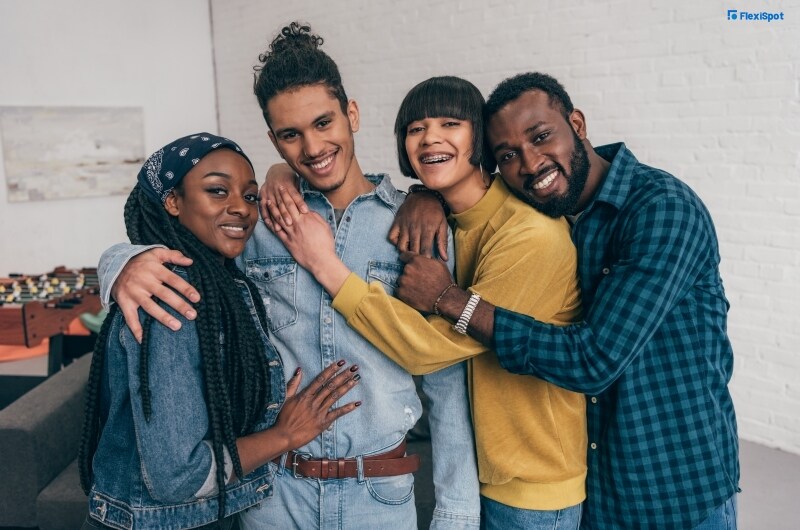Are you a hugger and people have constantly complimented you for your warm hugs? Do you feel your oxytocin levels rise when you kiss someone? Do massages or back rubs have the power to turn your bad day into a good one? Do you engage in public displays of affection without getting conscious? When you speak, do you find your hands reaching out to the person you are talking to? There are many more examples but if you say yes to most of these instances, then there’s a high percentage that your primary love language is Physical Touch.
Marriage counselor Gary Chapman devised five love languages after having talked with married couples in therapy. While their issues are deeply personal and specific, Gary saw a pattern among all the stories being relayed to him. There is a language that love speaks, and we respond and give it to others differently. In other words, we feel loved when someone does this and we give a certain kind of behavior to someone we love. Gary may have used married couples as a reference but his five languages did not only comprise romantic love—it can well be noticed in families and friendships, anything that involves human interaction. The five languages are namely Physical Touch, Words of Affirmation, Receiving Gifts, Quality Time, and Acts of Service.
All of these five we practice and receive but according to Gary, there are one or two love languages that we respond positively to the most. When we understand what this is, we could become better lovers, parents, children, sisters, and friends. Since there are differences in love languages, each receives criticism from those who do not speak the same language. People with a love language of words of affirmation get slammed for being too easy to manipulate or deceive. Those who feel loved when receiving gifts are criticized as materialistic. Those who prefer Quality Time are mocked as clingy and don’t have better use of their time. They say that those who love to receive Acts of Service are lazy and dependent.
Physical Touch, in particular, is often associated with lust or sex—something most people perceive to not count as love. Do not be mistaken. Those with a love language of Physical Touch do not see a sexual activity as a form of lust. It is really more about feeling a deep and intimate connection with another person’s touch, feeling safe and secure in someone’s arms. Being touchy comes naturally to them and does not automatically mean all they want is to have sex.

Your Primary Love Language Is Physical Touch If:
There are various ways to determine if physical touch is how you give love and when you feel most loved. Look out for these signs:
Hugs and kisses are something you look forward to so you are open to initiating it all the time.
You smile when you receive random kisses from a person you love.
You display public affection casually.
You like massages.
Your hand usually lands on the person you are talking to.
Long, warm hugs are your definite favorites.
There is a feeling of calmness and warmth when you receive
You get told that you are a touchy person.
You feel alone when your relationship doesn’t go with physical touch.
You love it when the love of your life initiates contact between you two.
You feel special simply with how someone holds onto you.

How To Speak the Love Language of Physical Touch
It doesn’t mean you’re going to change yourself to satisfy someone. If you truly love another person, you are willing to learn and adjust to his or her love language without losing yourself.
There is no need for grand gestures. All you have to do is to practice giving out small physical touches which might mean giving random small kisses when at the dinner table for instance. It’s when you offer a hug when you see your loved one sad and depressed about something. It’s when you don’t resist someone being touchy to you and respond in the best way that you can.
If these are all new to you, don’t pressure yourself and take your time. You would eventually be missing the long hugs and kisses so extend them while you still can. Massage his or her back if he or she doesn’t use an ergonomic chair at the office and is suffering from back and neck pain. Hold each other’s hand and don’t let go until necessary. Give them small touches when you see that they’re going through a rough time.
Suffice it to say, it will be difficult for people with this love language to be in a long-distance relationship. There will be times though that life throws scenarios your way in which you would need to spend time apart. There won’t be any physical touch in this matter but you could resort to seeing others in a video conference, for instance.
There are many ways to have fun with a partner, friend, or family online. There are options for video chatting, movie streaming, playing games together, etc. It may not be replaced but having these shared experiences could satisfy the lack of physical touch. Lovers in this kind of set-up will be looking forward to the day they get to see each other again.

Tip: Use a dual monitor mount from Flexispot when you video call or stream. It’s much better to have two screens that are firmly mounted on the desk and hide the cable wires through its management system.

Benefits of Physical Touch
Physical touch or contact benefits not only the future of the relationship but also your health. Yes, it makes relationships and bonds stronger. And yes, it also gives you a host of physical health benefits We listed down some of the benefits that you could enjoy with Physical Touch.
Physical touch may result in stronger emotional intimacy.
Physical touch makes people feel a little less lonely, abandoned, or neglected.
For stress management, physical touch lowers cortisol levels.
Pain is reduced in monthly body changes of women.
Physical touch keeps heart rate and blood pressure at normal levels.
Physical touch releases oxytocin, serotonin, and dopamine—happy hormones that uplift someone’s mood.
When you haven’t been satisfied in this area for a long time, you may experience anxiety, depression, stress, and more.